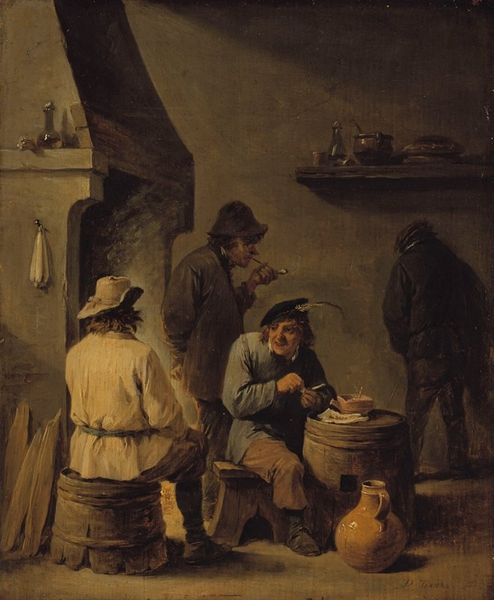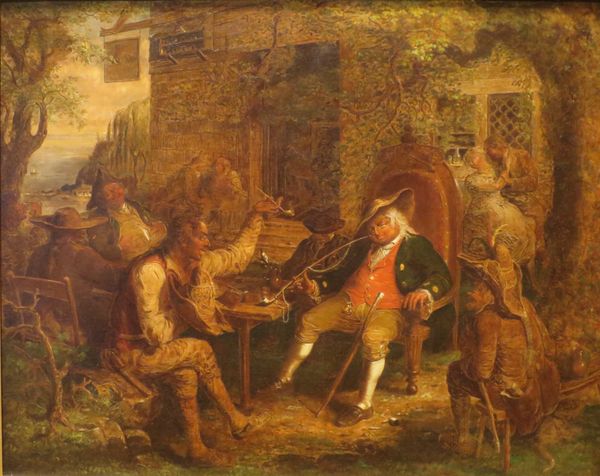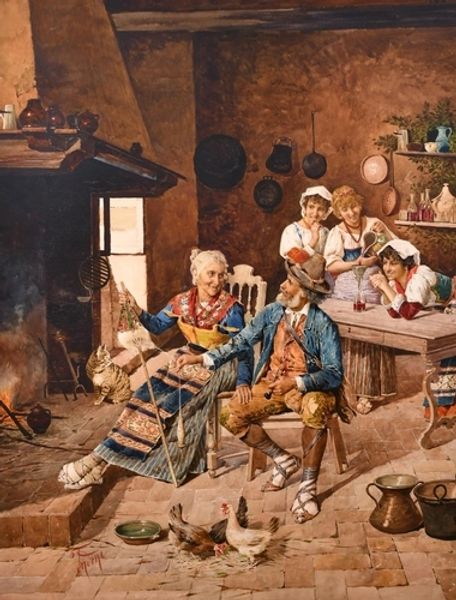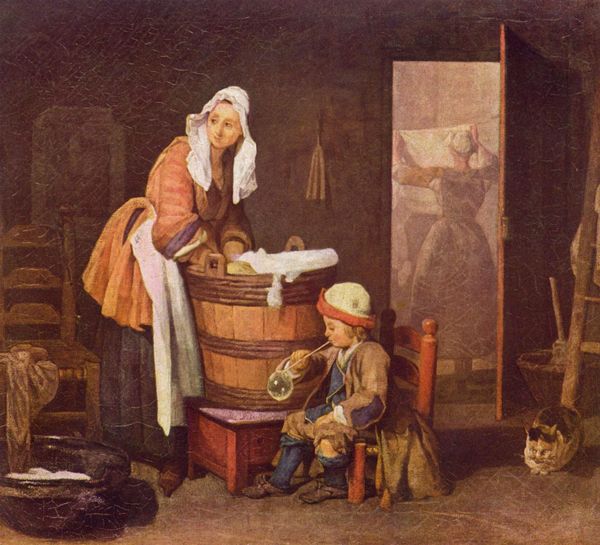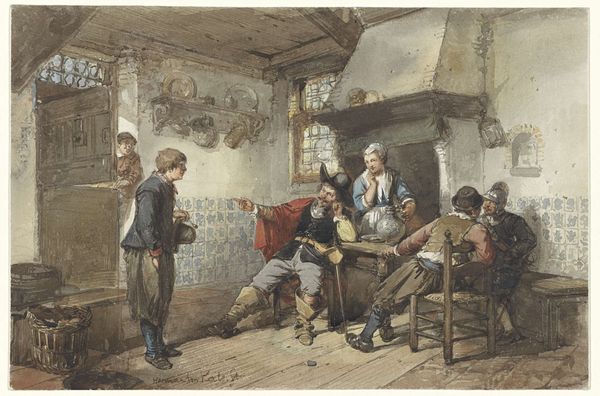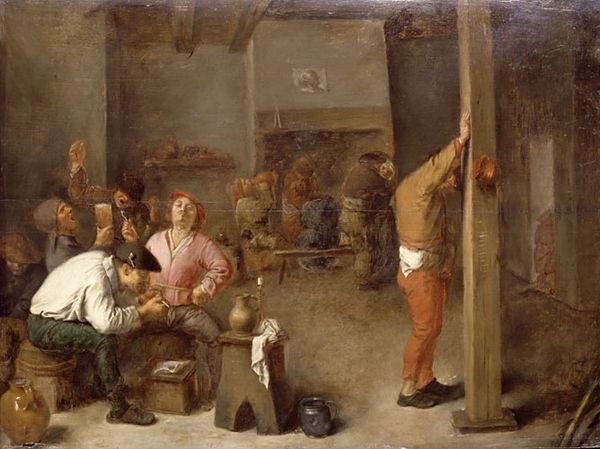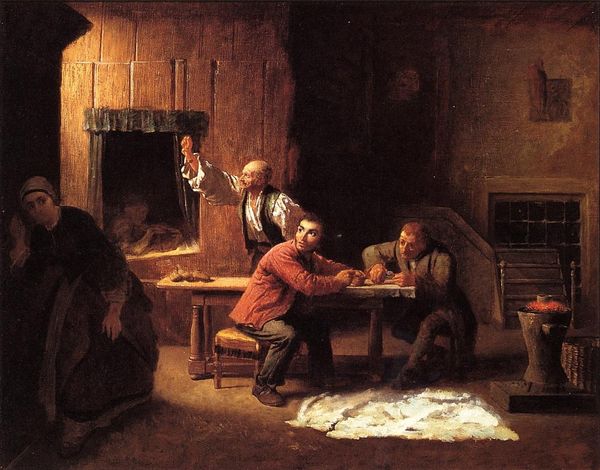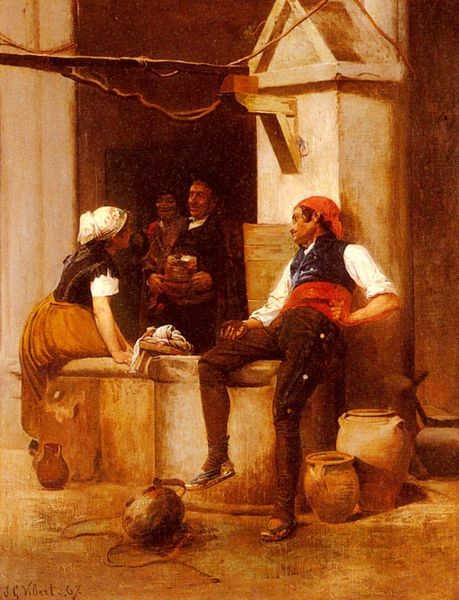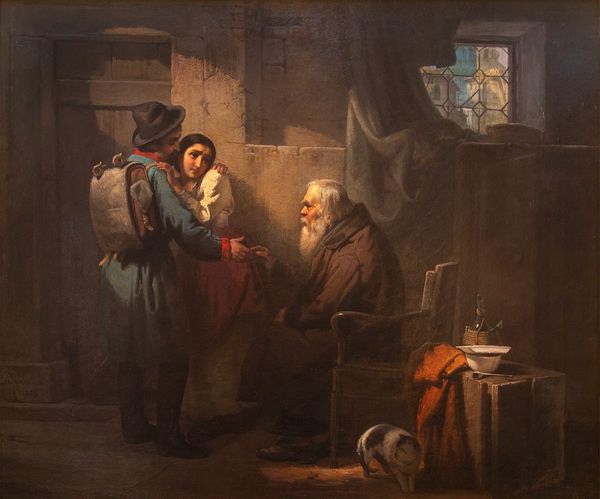
oil-paint
#
portrait
#
oil-paint
#
oil painting
#
genre-painting
#
italian-renaissance
#
italy
#
realism
Copyright: Public domain
Editor: So, this is Domenico Induno's "The Hunter," painted in 1850. It’s an oil painting housed in the Palazzo Brera in Milan. I’m immediately struck by how the composition is divided into these two distinct zones—one light, one quite dark—creating this really intimate, almost stage-like setting. What do you make of the visual structure of this painting? Curator: Well, consider the placement of the figures. Note how Induno orchestrates the visual balance. The positioning creates a counterpoint. Can you detect other visual patterns in how the objects are placed? Editor: I see how the diagonal line of the hunter’s rifle seems to intersect with the young boy's gaze, linking them across that division you pointed out earlier. But what does this emphasis on lines and compositional balance ultimately achieve, aesthetically? Curator: The lines articulate the spatial relationships within the frame, underscoring the subjects’ gestures. In essence, these features provide viewers with access to deeper layers of experience. And how does that affect your experience of viewing? Editor: It adds a layer of thoughtfulness; it moves beyond merely depicting a scene, making the act of viewing itself a kind of interpretive exercise. I now think about relationships, objects, lines and the interplay with negative spaces to define forms. Curator: Precisely. It is in decoding such formal nuances that we come closer to understanding how meaning and aesthetics merge within the canvas. Editor: I didn’t see that the first time around. I was focused on the overall impression. Thank you for making this about relationships between colors and objects that compose the visual expression, it really transformed the work for me. Curator: It's a pleasure to share how the language of forms speaks to our sensibilities.
Comments
No comments
Be the first to comment and join the conversation on the ultimate creative platform.


